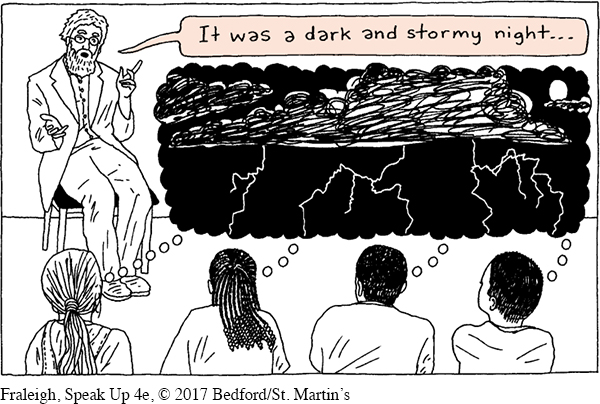Description
When you use description, you use words to paint a mental picture for your listeners so that they can close their eyes and imagine what you are saying. If you provide sufficient information and detail, your audience may be able to experience vividly what you describe—
What the aurora borealis looks like
What it’s like to work on a presidential campaign
472
What the people you see (every day) on public transportation look like
How you felt when you drove a car alone for the first time
What the call of a blackbird sounds like
How your city would look if people stopped littering
What it’s like to attend the Burning Man festival in Nevada
What it looks like when humpback whales breach
What a freshly applied tattoo feels like
Your descriptions can have maximum effect when you use vivid language, presentation aids, and details that evoke the senses of sight, sound, smell, touch, and taste. This can be especially effective if you use a description as a subpoint to engage listeners’ imaginations and place it in the middle of what you’re defining, explaining, demonstrating, or telling a story about. (See Chapter 12 for more on effective description.)
